The information provided below is based on a hand-out released by the Bureau of Statistics and Plans. The hand-out is available as a PDF here.
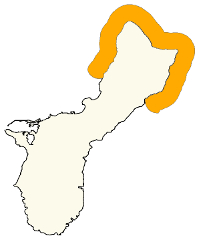 Northern reefs
Northern reefs
The northern reefs are generally considered to be in better condition than reefs in the south, as they are not affected by the intense levels of sedimentation experienced by many southern reefs. In general, the highest coral cover and diversity on Guam is found in an area beginning roughly at Falcona Beach on the northwest coast, continuing clockwise around the northern coast, and extending down to Pagat Point on the eastern side of the island. However, crown of thorns sea star outbreaks and recent coral bleaching events appear to have significantly altered these coral communities over the last few years. The abundance of medium-to-large fish is slightly higher on northern reefs (mainly northeastern) compared to reefs in other parts of the island, possibly due to the relatively better habitat quality and limited fishing access.
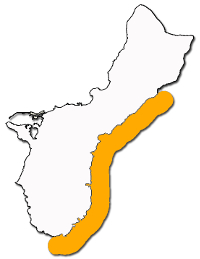 East-central and southeastern reefs
East-central and southeastern reefs
The health of reefs along the central and southern portions of the east coast is variable, but overall the reefs along this portion of Guam’s coastline have seen rapid declines in coral cover over the last decades. Some reefs adjacent to large river mouths have been degraded by sedimentation, and much of the somewhat deeper (> 30 ft) coral communities have been greatly impacted by crown of thorns sea stars. In addition, shallow coral communities that had generally been left untouched by the predatory sea stars have recently been impacted – in some areas severely – by coral bleaching.
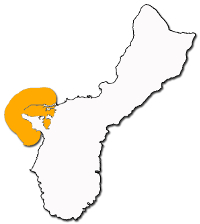
Apra Harbor reefs
Although Apra Harbor is home to the busiest port in Micronesia, a U.S. Navy base, and numerous recreational facilities, it contains both patch and fringing reefs with some of the highest coral percent cover (>80%) on the island. While the harbor reefs appear to be doing relatively well, the impacts of the increased turbidity, pollution, heavy fishing pressure, and invasive species associated with the area’s use as a port and naval base have not been fully assessed.
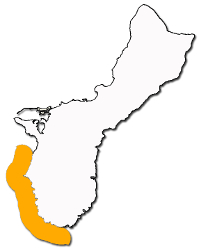 Southwestern reefs
Southwestern reefs
Most of the fringing reefs and patch reefs along the southwestern shore remain in poor to fair condition. Data from NOAA surveys over multiple years indicate that these reefs have the lowest average coral cover on the island. This is supported by University of Guam Marine Lab data from this region. A 10 km stretch of reef in this area was reportedly heavily impacted by sedimentation from a poorly planned coastal road project in the early 1990s. The reefs in this area continue to experience high levels of sedimentation from erosion caused by wildland arson, off road vehicle use and other activities.
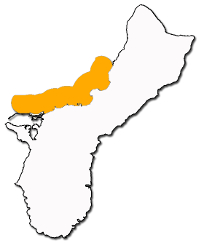 West-central reefs
West-central reefs
Several large bays, including Piti, Asan, Agana, and Tumon, are located along the central western coastline. Both Piti and Tumon Bays host a wide diversity of habitats and possess areas with vibrant reef communities, but there are also large expanses of severely degraded reef in these bays. Chronic crown of thorns sea star outbreaks and poor water quality appear to be the main impacts to these reef communities. The reef communities of Asan Bay are heavily impacted by sediment- and nutrient-laden river and stormwater discharges, and also experience heavy fishing pressure. The health of coral communities in West and East Agana Bays varies; coral cover is relatively high, especially along the shallow reef front and forereef slope, but coral diversity and fish biomass is somewhat low.
